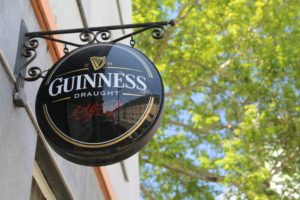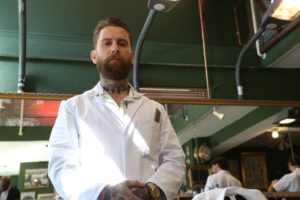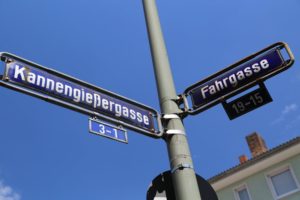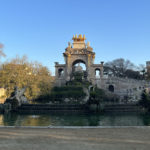I’ve always loved my time in Germany, primarily spent in Frankfurt and Mainz but I’ve also been fortunate to have visited other parts of the country including Heidelberg (famous for its old castle) and Munich, known world over for its Oktoberfest.
This famous beer festival held annually in Munich, is not just about savoring fine brews and delicious food; it’s also a celebration of Bavarian culture and tradition. A significant part of this cultural festivity is the traditional Bavarian clothing, which adds color, style, and authenticity to the event. For both men and women, donning traditional attire such as Dirndls and Lederhosen is a cherished practice, enhancing the Oktoberfest experience with a touch of historical charm and regional pride.
The Essence of Oktoberfest
Oktoberfest dates back to 1810, commemorating the marriage of Crown Prince Ludwig (later King Ludwig I) to Princess Therese of Saxe-Hildburghausen. Initially a public celebration with horse races, the event evolved over the years into the world’s largest beer festival, attracting millions of visitors from around the globe. Spanning 16-18 days, typically from late September to the first weekend in October, Oktoberfest is a vibrant mix of music, parades, traditional games, and, of course, beer. Central to this celebration is the attire that visitors and locals alike wear, reflecting Bavaria’s rich heritage.
Women’s Fashion: The Dirndl
The Dirndll is the quintessential dress for women during Oktoberfest. Originating as a traditional Alpine peasant dress in the 19th century, the Dirndl has evolved into a symbol of Bavarian culture and femininity.
Components of the Dirndl
Bodice: The bodice is often tight-fitting and can be plain or elaborately decorated with embroidery, lace, and buttons. It accentuates the waist, creating a flattering silhouette.
Blouse: Worn underneath the bodice, the blouse is typically white and can have varying sleeve lengths and styles, from puffy to off-the-shoulder. The neckline can also vary, ranging from high-necked to deeply plunging, depending on the wearer’s preference.
Skirt: The skirt, which can be knee-length or extend to the ankles, is usually full and pleated. It can be made from a variety of fabrics and often features vibrant patterns and colors.
Apron: The apron is a key component of the Dirndl, tied over the skirt. The knot of the apron holds special significance; tied on the left, it indicates that the woman is single, on the right, it signifies she is taken, in the center, it means she is a virgin, and at the back, it suggests she is widowed or a waitress.
Men’s Fashion: The Lederhosen
For men, Lederhosen are the traditional choice for Oktoberfest. These leather shorts or knee-length trousers are a staple of Bavarian folk attire, historically worn by peasants and workers for their durability.
Components of the Lederhosen
Leather Shorts/Trousers: Made from durable leather, usually cow or goat, Lederhosen can be either shorts (reaching above the knee) or knee-length. They are often adorned with intricate embroidery and may include suspenders.
Shirts: Men typically wear checkered or plain white shirts made of cotton or linen. These shirts are designed for comfort and breathability, suitable for long days of celebration.
Suspenders (Hosenträger): Traditional Lederhosen often come with suspenders, which can be plain or elaborately decorated. They help keep the trousers in place and add a distinctive Bavarian flair.
Socks and Shoes: Men usually wear knee-high woolen socks (Loferl) paired with sturdy, traditional Bavarian shoes (Haferlschuhe), which are durable and comfortable for extended wear.
Accessorizing the Oktoberfest Look
Both men and women enhance their Oktoberfest attire with various accessories. Women might wear flower crowns, necklaces, and earrings that complement their Dirndl. Men often sport traditional hats adorned with feathers or brush decorations (Gamsbart) and may carry walking canes.
Oktoberfest Today
While traditional clothing remains at the heart of Oktoberfest, the festival has evolved to embrace a blend of the old and new. Visitors from around the world come dressed in Dirndls and Lederhosen, joining the locals in celebrating Bavarian culture. The beer tents, filled with the sound of traditional Bavarian folk music, serve world-renowned brews alongside hearty German cuisine such as pretzels, sausages, and roast chicken.
Oktoberfest also features parades showcasing historical costumes, horse-drawn beer wagons, and traditional dance performances, providing a glimpse into Bavaria’s rich cultural tapestry. The festival grounds, known as Theresienwiese, become a bustling hub of activity, offering amusement rides, games, and souvenir shops.
Conclusion
Oktoberfest is more than just a beer festival; it’s a celebration of Bavarian heritage and tradition, vividly expressed through its distinctive clothing. Wearing a Dirndl or Lederhosen not only enhances the festive experience but also connects participants to the historical and cultural roots of Bavaria. As you immerse yourself in the sights, sounds, and tastes of Oktoberfest, donning traditional Bavarian attire ensures you’re part of this rich, joyous tapestry. Whether you’re a local or a visitor, embracing the fashion of Oktoberfest is a memorable way to celebrate this iconic festival.










Leave a Reply